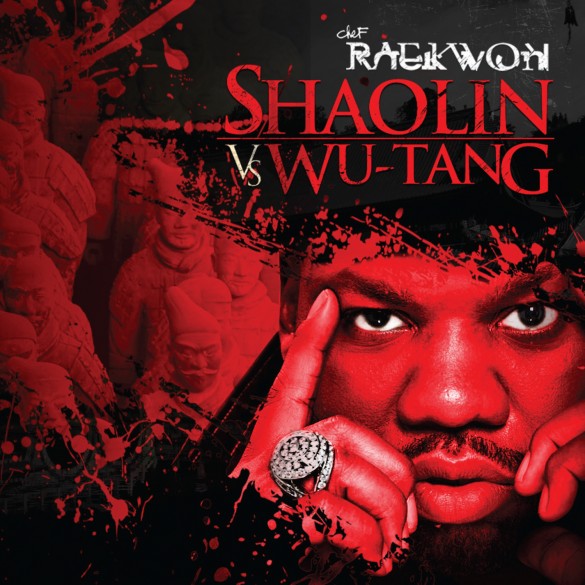
 BY MATTHEW HENGEVELD YO! MTV Raps first interviewed the Wu-Tang Clan in 1993 fresh off the set of “Da Mystery of Chessboxin’” music video. Each member had a chance to speak to Fab 5 Freddy, but Raekwon initially declined — lurking in the background chewing on a toothpick. Minutes later, Rae violently yanks the mic from Freddy and explains the duality of swordplay and wordplay in his hip-hop. He’s a silent-eccentric like Miles and Mingus. There’s a second or third layer to everything he says. Ghostface Killah may be the enigma of the Wu-Tang Clan, but Rae is undoubtedly its Arthur Fonzarelli. His vernacular is unlike any other rapper alive. When Rae doesn’t have a word for some thing, action or emotion, he invents one and speaks it with a confidence that gives a word more cred than Webster’s.
BY MATTHEW HENGEVELD YO! MTV Raps first interviewed the Wu-Tang Clan in 1993 fresh off the set of “Da Mystery of Chessboxin’” music video. Each member had a chance to speak to Fab 5 Freddy, but Raekwon initially declined — lurking in the background chewing on a toothpick. Minutes later, Rae violently yanks the mic from Freddy and explains the duality of swordplay and wordplay in his hip-hop. He’s a silent-eccentric like Miles and Mingus. There’s a second or third layer to everything he says. Ghostface Killah may be the enigma of the Wu-Tang Clan, but Rae is undoubtedly its Arthur Fonzarelli. His vernacular is unlike any other rapper alive. When Rae doesn’t have a word for some thing, action or emotion, he invents one and speaks it with a confidence that gives a word more cred than Webster’s.
Although Shaolin Vs. Wu-Tang seems like an extended derivation of 2009’s Wu-Massacre, Raekwon’s newest effort is a multi-layered masterpiece. Shaolin vs. Wu-Tang has a good-to-the-last-bite appeal. The beats seem oven-fresh with drums that bang, but never overpower. Raekwon adds a break-of-dawn grogginess to his rhymes and sounds more rugged than ever before. RZA is nowhere to be found and purists are certainly shaken about that. But I think RZA’s absence works to Raekwon’s advantage.
“Rock ‘n Roll” might have been a Dipset throwaway track, but Ghost/Rae give the droll, pounding cliché track a listenable twist. “Last Boat to Scotland” revitalizes G-Unit base-hitter Lloyd Banks and is one of many Mafioso story-telling tracks. The Alchemist-produced “Ferry Boat Killaz” is regal with rolling pizzicato keys, and probably the most traditional Wu-Tang track on the album. The progression from “Butter Knives” to “Snake Pond” to “Crane Style” is masterfully done. All three songs are perfect— “Snake Pond” is the best hip-hop track I’ve heard in over a year. Lyrics are 10/10 and roll out like a sick Dick Tracey fantasy. Traditional Asian string and woodwind instruments are a new addition to Wu-Tang’s repertoire, but sound completely at home.
Overall this is not an album to miss, especially if your interest in the Wu-Tang died in the ‘90s. I think the New Yorker hit the target when they called Rae a “local hero.” In essence, what is Shaolin, if not Staten Island? And couldn’t Shaolin vs. Wu-Tang be construed as the polarity between the stardom of the Wu-Tang and the city it represents? Perhaps this is why Raekwon distanced himself from RZA’s ‘high art’ album 8 Diagrams — it was tinged with unfamiliar sounds and themes. Raekwon is taking the Wu-Tang back to its roots, with an onslaught of familiarities, guests and beats.
